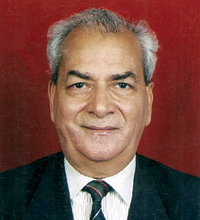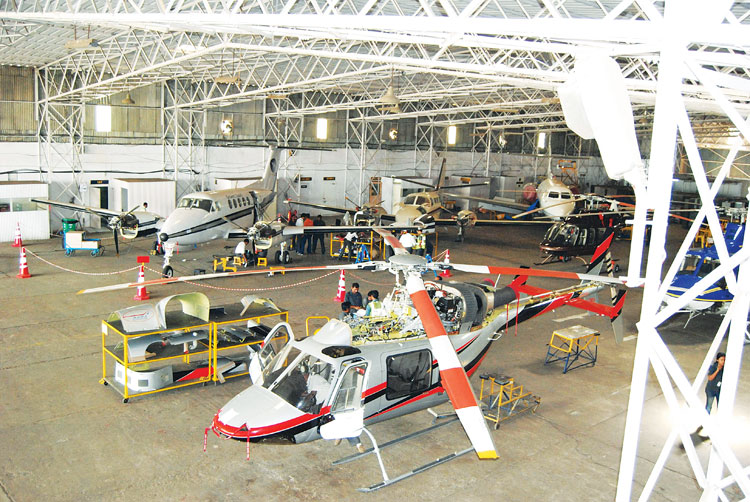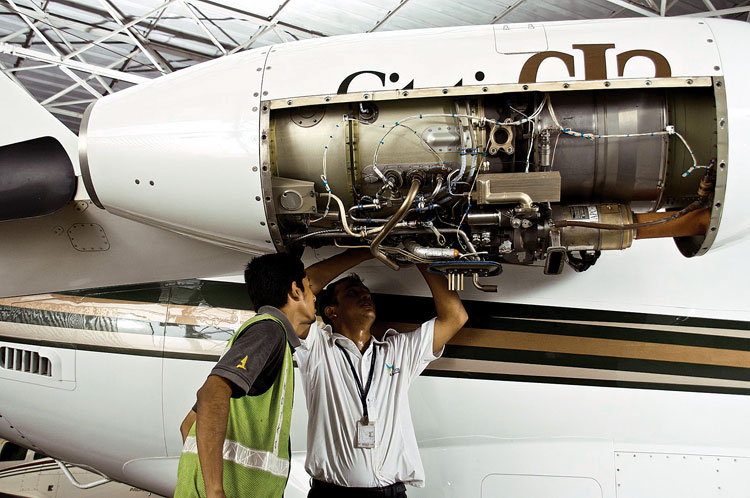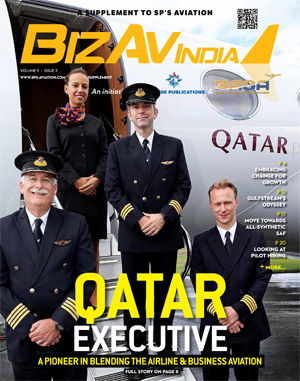Tardy Pace of Growth of Civil Aviation MRO in India
A proactive and conciliatory approach between the industry and the policy makers is required for the growth of this essential sector
 | Air Vice Marshal S.S. Chauhan (Retd) President, Business Aircraft Operators’ Association (BAOA) |
Since 1947, India has made spectacular achievements in a number of technology-based fields. Without much effort, one could at random list Space Technology, Atomic Energy, Armed Forces, Software, Automobiles, Education, Health Care, even, to a large extent, Dairy & Farming, etc... as some of the notable areas! This has been so due to a conscious political or bureaucratic priority having been given to some selected sectors by the successive Governments in power, while relegating the remaining sectors to the background either as of secondary national priority or by default.
In the civil aviation sector, the field of aircraft maintenance has been such a secondary (more aptly, shall we say, neglected!) field. In the very recent past, that is more than 70 years after independence, there has been some awakening & at least a budgeted clarion call has been given by the Government in power with a view to accelerate the process of growth of Aviation MRO (Maintenance, Repair & Overhaul) in India!

On the other hand, since the early part of these 70 years, smaller countries in our contiguous regions such as, illustratively, Israel, Singapore, UAE, Malaysia & some others - each with its geographical size not exceeding JUST ONE of the 28 States, or of the 8 UTs, of India - have set up & have been operating remarkable MRO facilities for serving not only their own national needs but also of other countries as well. The state of Israel deserves a special mention here, as both Israel & India gained independence in the same year viz 1947, but the difference in Civil Aviation MRO capabilities of these two nations is really vast, Israel being far ahead of, & India being far behind, others!
Save in a few exceptional cases, the MRO issues in the long-term, as applicable to Civil Aviation Aircraft in India, have never been properly understood or appreciated by a majority of the powers that be, whether these be the aircraft owners or the operators, or the bureaucrats & the policy makers. The stress has been mainly on the ‘operational part’ of aircraft operations, thus, perhaps inadvertently, overlooking the fact that without making equally adequate & definite arrangements for the MRO aspects, the continued availability of aircraft for operations, & in turn profitability, would be seriously impacted over a period of time. The approach in the countries that have set up good MRO facilities, even when not being the OEMs (Original Equipment Manufacturers) of such aircraft, has been quite different. Developing parallel MRO facilities, as an integrated & wholesome part of aviation services, has been their forte’. Today the widely dispersed aviation entities in a big country like India depend not only on the ‘Aircraft-OEM’ countries but also on these smaller (mostly ‘Non-OEM’) countries to bale themselves out from difficult MRO situations. The cost of such external dependence on aircraft MRO requirements, mandatory by nature, has also been prohibitive, however, there has been no choice with the aircraft owners except to just comply & pay up, while simultaneously rueing & regretting continued non-availability of most of the required MRO facilities within India.
WITHOUT MAKING EQUALLY ADEQUATE & DEFINITE ARRANGEMENTS FOR THE MRO ASPECTS, THE CONTINUED AVAILABILITY OF AIRCRAFT FOR OPERATIONS, & IN TURN PROFITABILITY, WOULD BE SERIOUSLY IMPACTED OVER A PERIOD OF TIME
What has been the role of the private sector in setting up, or in not setting up, the requisite MRO facilities?
Once again, by & large, either the potential investor could not properly visualise the merits of this golden business in a long term perspective, or did not have the courage to invest against uncertain profits in the near term. As a business model, it is well-known that the gestation period of aviation MRO projects is at least two to three years more than most other business models, hence the potential investor has been shy of going into such ventures even though the subsequent returns may have had the promise of being much more rewarding! This is where, one way or the other & as a necessary incentive measure, the Government, or its designated agencies, ought to have stepped in decades ago to actively promote investment into this neglected sector.
Why is a direct Government intervention in aviation MRO sector considered unavoidable? For an answer, one has to understand what has happened in the past, leaving Indian aircraft operators at the mercy of both the OEMs of aircraft (includes engines, components, fittings & furnishings) & of the ‘other-than-aircraft-OEM’ MRO facilities as have been successfully set up in some other countries.
Keeping flight safety uppermost in mind, the aircraft ‘Operations’ & the ‘MRO’ rules have always been the most well-defined articles in the OEM-published manuals, required to be strictly carried out in their implementation by the aircraft operators, further under constant regulation & watch of the country’s aviation regulator. The necessary rules of the game for their continued usage, acceptable operational life, timely replacements as well as the MRO requirements of the aircraft systems/components/ parts (be it the engine, the avionics hardware & software, a pump, a fan belt, an electrical fuse, or even a split pin!) are precisely defined in these manuals written by the original equipment manufacturers. The contents of these manuals, pertaining to the hundreds of subassemblies, components & parts, that go into the making of an aeroplane, become the law, requiring the OEM’s express consent for any proposed deviation whatsoever. For many reasons, including the constant profit motive as the prime reason, any proposed remedy or deviation, even if otherwise technically sound in nature & content, would not be agreeable as it would also involve a tedious process of clearance from the OEM country’s aviation regulator as well. Further, such OEMs will not ordinarily agree to provide equipment overhaul manuals to outsiders, as this would impact their constant & guaranteed flow of work, hence continued profits, from all such nations who in the first place bought the aircraft type in question, whether by the governments or by the private individuals or establishments. The buyer country’s aviation regulator also cannot help, even if the end-user offers a reasonable request or a sound technical suggestion, as the regulator would not have the necessary authority or the expertise to over-ride the design intent of the manufacturer as well as of the original (seller) country’s aviation regulator who gave ‘Release to Service’ approval to the aircraft design, manufacture & operational clearance. This leads to a constant, long-term, economically exploitative situation of the buyer by the seller: an international monopolistic situation that has been & will continue to be difficult to overcome by our aircraft buyers in the civil aviation sector!

What may be a likely solution to this impasse? Well, nothing other than a Government-level intervention by the buying country. But how? Well, as a practical possibility, it is suggested that this is how:
Our current inventory of civil aviation aircraft are purchased from the aircraft manufacturing houses mostly located in USA, Canada, Europe, UK & South America). These aircraft orders fall into the following three categories:
- Orders in bulk (even upto 100 aircraft at a time) by the scheduled airlines.
- Orders in small numbers, say one, two or three aircraft at a time, by private investors or the state governments, for deployment in the corporate or business aircraft role, or for private/personal flying.
- Orders in small numbers in batches for flying training schools, in both the public & the private sectors.
In a monopolistic situation, what matters most is the ‘leverage’ that a buyer can exercise on the seller at the time of purchase of the commodity in question. As such, the aircraft buyers in categories ‘2 & 3’ above may not have sufficient leverage with the sellers due to ‘low’ & ‘non-simultaneous’ numbers on order. One therefore needs to lock on to category ‘1’ buyers i.e. the scheduled airlines, known to place very high value orders involving large number of aircraft, engines & associated spare parts at a time.
It needs to be remembered that permission to import all types of aircraft is given by the Government. Here one can take a cue from the ‘Defense Procurement Procedures’, wherein the Government has built an “Offset Clause”, under which the seller OEM is obliged to plough back, say, 30 per cent of the value of the order into the buyer country projects.
In this respect, neither the Government of India, nor, by & large, the scheduled airlines have put their foot down in the past to ensure that it is made a mandatory obligation on the part of aircraft manufacturers to set up the supporting MRO facilities in our country as & when bulk orders for aircraft & engines, running into billions of dollars, are placed on the suppliers. While, at times & as an option, the scheduled airlines may have shelved some of their other interests & decided to set up such or much associated MRO facilities, it is upto the Government of India to make it a mandatory pre-condition for the aircraft OEMs to set up a comprehensive range of practicable MRO facilities before granting permission to the scheduled airlines to import such bulk quantities of aircraft, engines & components/accessories into the country. Here, it is also strongly suggested that an expert technical committee or a qualified representative of the country’s aviation regulator - the DGCA - should be essentially involved in defining the nature & extent of such MRO facilities to be set up in the country against an ‘offset clause’, so as to protect & promote the overall national MRO interests. The regulator, at its discretion, may also consider involving or consulting concerned agencies such as, for example, the ‘MRO Association of India’. Such a step would surely put the foundation of the aviation MRO industry in India on a firm footing. This will also subsequently have a natural multiplier effect over a period of time to serve even the MRO requirements of the other ‘poor country cousins’ of the scheduled airlines, viz the minority ‘Business Aviation’ & the ‘Private Category’ aircraft owners. If such a step has not been considered earlier, well, it is never too late to take the appropriate steps even now & thereafter it is expected that remarkable results would be seen over the next few years in the development & consolidation of the ‘Civil Aviation MRO Industry’ in India.





